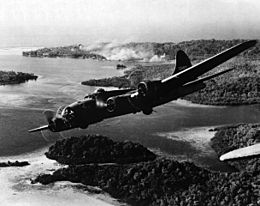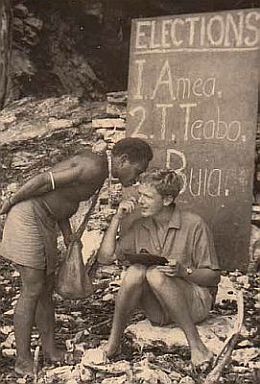British Solomon Islands facts for kids
Quick facts for kids
Solomon Islands Protectorate
|
|||||||||||||
|---|---|---|---|---|---|---|---|---|---|---|---|---|---|
| 1893–1978 | |||||||||||||
|
|
|||||||||||||
 |
|||||||||||||
| Status | Protectorate of the United Kingdom | ||||||||||||
| Capital | Tulagi (1893–1952) Honiara (1952–1978) |
||||||||||||
| Common languages | English (official) Pijin Rennellese, Tikopia, Ontong Java, Sikaiana, Vaeakau-Taumako |
||||||||||||
| Religion | Christianity, native beliefs | ||||||||||||
| Government | Constitutional monarchy | ||||||||||||
| Monarch | |||||||||||||
|
• 1893–1901
|
Victoria | ||||||||||||
|
• 1952–1978
|
Elizabeth II | ||||||||||||
| Governor | |||||||||||||
|
• 1896-1915
|
Charles Morris Woodford (as Resident Commissioner) | ||||||||||||
|
• 1976–1978
|
Sir Colin Allan | ||||||||||||
| Legislature | Legislative Council | ||||||||||||
| History | |||||||||||||
|
• Established
|
15 March 1893 | ||||||||||||
| 14 November 1899 | |||||||||||||
|
• Renamed
|
22 June 1975 | ||||||||||||
|
• Self-governing colony
|
2 January 1976 | ||||||||||||
|
• Independence
|
7 July 1978 | ||||||||||||
| Currency | Solomon Islands pound (1916–1966) Pound sterling (1893–1920) Australian pound (1920–1966) Australian dollar (1966–1977) Solomon Islands dollar (1977–1978) |
||||||||||||
| ISO 3166 code | SB | ||||||||||||
|
|||||||||||||
The British Solomon Islands Protectorate was a group of islands in the Pacific Ocean. It was controlled by the United Kingdom from 1893 until 1978. In 1893, Captain Gibson of the Royal Navy officially declared the southern islands a British protectorate. This meant the British government protected and governed them. Over time, more islands were added to this protectorate.
Contents
How the Protectorate Began
After an agreement between Britain and Germany about the Pacific Ocean, the British Solomon Islands Protectorate was officially started in 1893. British Navy officers raised the British flag and read special announcements on 21 islands. In 1896, Charles Morris Woodford became a special representative for the British. He explored the islands to see if the protectorate would be good for the economy.
Woodford chose Tulagi as the main administrative center and bought the island in 1896. He became the Resident Commissioner in 1897. His job was to control the trade of workers and stop illegal gun sales. Another official, Arthur William Mahaffy, worked to stop certain traditional practices in islands like New Georgia.
More islands were added to the protectorate later. Bellona, Rennell Islands, and Sikaiana joined in 1897. The Santa Cruz group and other nearby islands were added in 1898. In 1899, Germany gave up its claims to islands east and south-east of Bougainville. This meant islands like Choiseul and Ysabel also became part of the British Protectorate in 1900.
Stopping Old Practices
When the British took control, some Solomon Islanders continued certain traditional practices, including raids and conflicts. The British Navy sent warships to stop these activities. For example, in 1897, HMS Rapid went to islands like Rendova and New Georgia to stop conflicts. In 1891, after a European trader was killed, HMS Royalist responded by destroying a village and canoes involved.
Shipping and Travel
Early British officials like Woodford used small boats or traveled on trading ships and Navy vessels to move between the islands. Shipping companies like Burns Philp and others operated steamships and schooners, connecting the Solomon Islands to Sydney, Australia.
In 1899, Woodford bought a boat called the Lahloo to help stop conflicts in the New Georgia group. This boat was unfortunately wrecked in 1909. A new ship, the Belama, was bought in 1909 but also wrecked in 1911. Its replacement, also named Belama, arrived in 1911 but was wrecked in 1921.
Plantation Economy
The British wanted the protectorate to pay for itself. They did this by taxing products like copra (dried coconut meat) that were sold from the islands. The main goal was to encourage British and Australian companies to invest in plantations. By 1902, many Europeans were in the Solomon Islands, mostly working on copra plantations.
A rule called the Solomon (Waste Land) Regulation of 1900 tried to make land available for these plantations. It said that land not used by Solomon Islanders could be declared "waste" and used for farming. However, this idea of "waste land" did not match the local customs, where even empty land was owned by families or communities.
Early attempts to set up plantations faced problems because the land rules did not allow for formal leases. This made it hard for companies to get money from banks to develop the plantations.
Later, Lever's Pacific Plantations Ltd became the biggest plantation owner, with 26 plantations by 1916. Other companies like the Malayta Company and Burns, Philp & Co also ran many plantations. These large companies employed most of the Solomon Islanders working in the copra industry.
World War II in the Islands

Japanese Invasion
In 1940, Donald Gilbert Kennedy joined the British administration. When Japan attacked Pearl Harbor in 1941, Kennedy set up a network of local people called Coastwatchers. These Coastwatchers were planters, government workers, missionaries, and islanders. They hid after the Japanese invaded in January 1942. They watched for Japanese ships and planes, reporting by radio, and rescued Allied soldiers who were stuck in Japanese-held areas.
The United States led a counter-attack. The 1st Division of the US Marine Corps landed on Guadalcanal and Tulagi in August 1942. Some of the toughest fighting of World War II happened on these islands for nearly three years.
Tulagi, the main British administrative center, was destroyed in the heavy fighting. The battle for Guadalcanal, especially for an airfield called Henderson Field, led to the nearby town of Honiara becoming a major supply center for the United States.
Island Heroes: Biuku Gasa and Eroni Kumana
Two islanders, Biuku Gasa and Eroni Kumana, were important Allied scouts during the war. They became famous for finding John F. Kennedy and his crew after their boat, the PT-109, was shipwrecked. They used a traditional dugout canoe to find them. They even suggested using a coconut to write a rescue message. This coconut was later kept on Kennedy's desk. For a long time, their names were not widely known in movies or history books. A member of the Kennedy family visited them in 2002, where they still lived in traditional homes.
Impact of the War
The war greatly changed the lives of the islanders. The fighting caused a lot of damage. Also, new modern tools, machines, and Western culture changed traditional ways of life. Rebuilding was slow because there was no money for war damages, and the plantations that supported the economy were destroyed.
However, working with the Allies during the war taught Solomon Islanders about how important economic organization and trade could be for improving their lives. Some of these ideas led to a political movement after the war called "Maasina Ruru" or "Marching Rule."
Moving Towards Independence
Local Councils and Government
Things became more stable in the 1950s. The British administration created a system of local councils. Solomon Islanders who had experience in these local councils began to join the central government. From 1960, they participated in new groups called the Legislative and Executive Councils.
At first, the High Commissioner chose who would be on these councils. But over time, more positions were chosen by direct elections or by groups formed by the local councils. A challenge was that not many people could read or write, so voters could whisper their choice to an official, who would record it.
Idea of Transferring to Australia
In the 1950s, British and Australian officials thought about transferring control of the Solomon Islands from the UK to Australia. The islands had strong ties to Australia, using Australian money and services. Some Australian officials felt Britain wasn't doing enough for the islands. However, Australia's government decided not to take over because of the costs and other reasons.
First National Elections
The first national election for a specific area, Honiara, was held in 1964. By 1967, the first general election took place for most of the seats in the Legislative Council.
More elections were held in 1970, and a new system of government was introduced. This system created a single Governing Council and a "committee system." The idea was to help elected representatives learn about governing and work better with the colonial administration. However, this system was not popular with the elected members.
So, in 1974, a new constitution was created. It set up a standard form of government like the British system. Solomon Mamaloni became the country's first Chief Minister in July 1974. The Governing Council became the Legislative Assembly. The British Protectorate officially ended in 1978, and the Solomon Islands became an independent nation.






